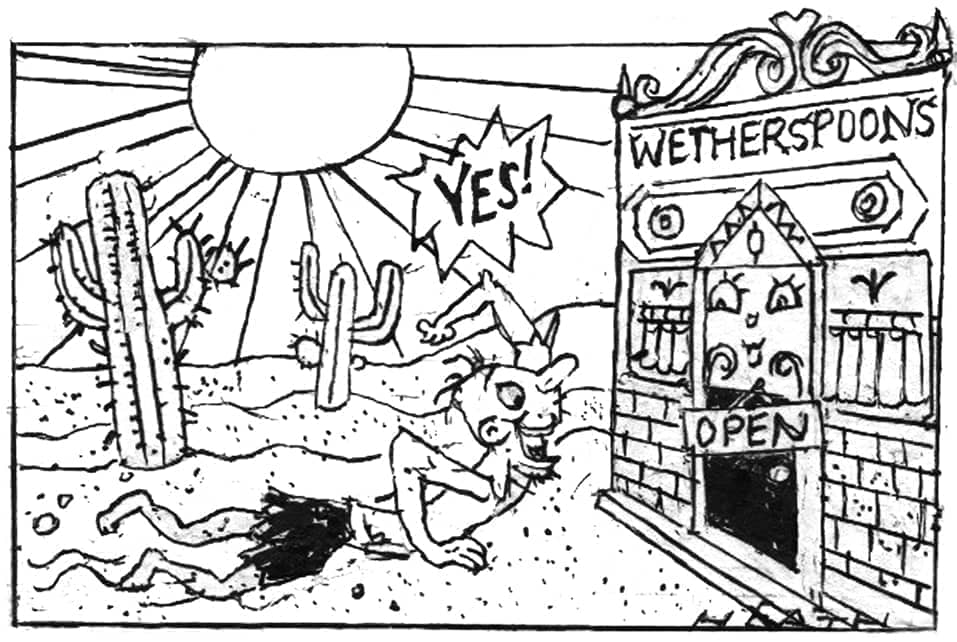The J.D. does indeed come from J.D. ‘Boss’ Hogg in The Dukes of Hazzard. But Tim Martin’s reason for ‘Wetherspoon’ is slightly different from the commonly told version. Yes, it was the surname of one of his schoolteachers in New Zealand. But Mr Wetherspoon didn’t tell Martin he would never amount to anything – rather he struggled to keep control of his class. And when Martin opened his first pub in Muswell Hill in 1979, he feared a similar problem.
More than 40 years and nearly 900 pubs later, the fear seems ill-founded. Yes, the chain was in the news last week for its slow recovery from the pandemic, with Martin blaming the ‘drink at home’ culture acquired during lockdown. But ‘Spoons’ will doubtless be back to full strength before long. It’s simply too good at what it does. Martin’s attention to detail is legendary – he’s on the road three or four days a week, talking to punters and staff.
The pubs themselves are beautiful. Often converted from churches, cinemas, fire stations, post offices, banks and the like, each has its own individually designed carpet costing up to £30,000 and reflecting the history of the building or area. The pattern at the Queen’s Hotel in the former mining community of Maltby, for instance, incorporates a mine shaft and pit ponies. The carpets have their own website, and there’s even a colouring book, Colour Your Own Spoons Carpet.
Wetherspoons pubs don’t play music, knowing that the best pubs provide their own, in the form of chatter. This is one of the criteria in George Orwell’s 1946 essay about the perfect pub, ‘The Moon Under Water’. Several Wetherspoons have used that as their name, but usually the pubs reference a local connection. There’s the Velvet Coaster in Blackpool (a fairground ride’s carriages were lined with said material). Bletchley boasts Captain Ridley’s Shooting Party, the codename for the MI6 group who scouted the area for possible use as a code-breaking centre. Meanwhile some pubs honour local residents, like the Peter Cushing in Whitstable and the Sir Norman Wisdom in Deal. The late great Barry Cryer was a regular at the Wetherspoons in Hatch End – surely a name change beckons?
Serious ale fans always tell me that Spoons knows its stuff (the chain hosts two beer festivals each year), while the low prices are possible because of the company’s sheer size and longer opening hours. It had non-smoking bars as far back as 1991, and prides itself on its many wins at the Loo of the Year Awards.
In short, Wetherspoons knows its market and caters for it brilliantly. Yet despite this, it receives snobbish criticism from people who are never going to be part of that market. (In this, if in nothing else, it mirrors Andrew Lloyd Webber.) The critics fail to spot that life isn’t all-or-nothing – it can be horses for courses. I’m not a Spoons habitué, but I often enjoy a pie or mixed grill at the Hamilton Hall next to Liverpool Street station, or the Knights Templar in Chancery Lane (a gorgeous old bank). Properly filling food is a sensible precaution before drinks parties where only nibbles are on offer, and it’s nice to get that in central London without needing a second mortgage. Times might be tricky for Spoons. But last orders are a long way off.






Comments